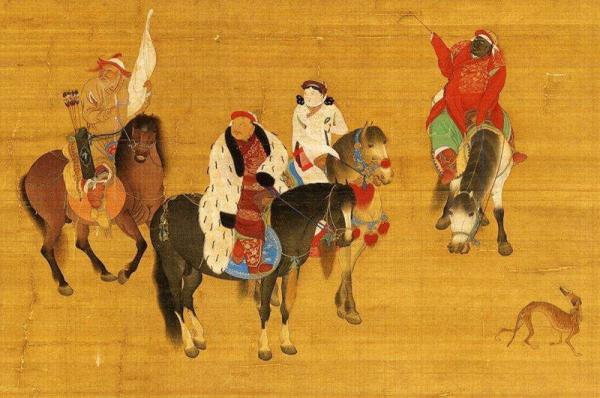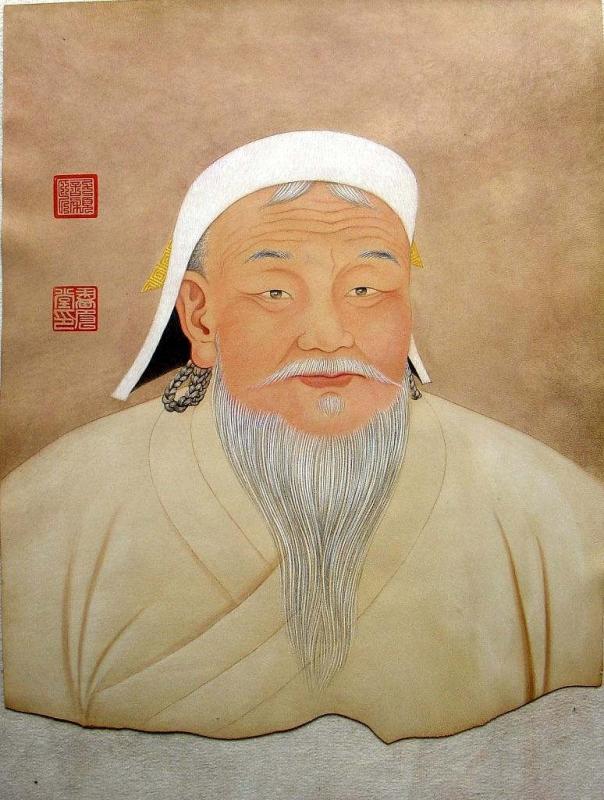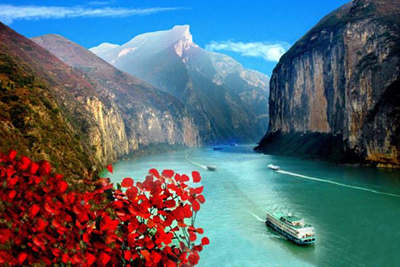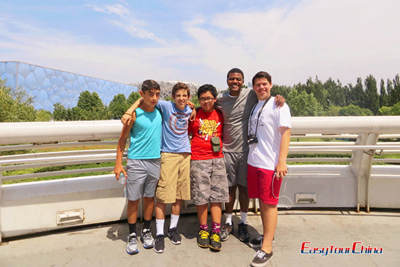Yuan Dynasty
The Yuan Dynasty (1271-1368) ended the 370-year divisive period after Song Dynasty and unified the whole country, paving the way for a lasting unification through the Ming and Qing period. Kublai Khan, a grandson of Genghis Khan and the supreme leader of all Mongol tribes, established Yuan Dynasty.
Yuan regime rulers adopted laws from the Han nationality and set up political, economic and cultural systems that promoted social development. In its early period, they also developed a fine postal system and an extensive network of roads and canals reaching to the distant Mongol.

Yuan Dynasty Facts
In Chinse: 元朝
Time period: December 18, 1271 to September 14, 1368
Capitals: Dadu (Beijing), Shangdu (Zhenglan Banner, Xilin Gol League, Inner Mongolia Autonomous Region)
Population: About 90 million (in 1341)
Main ethnical groups: Han, Mongols, Semu people, Nan people
First Emperor: Kublai Khan
The Yuan dynasty territory, at the peak time, covered Siberia in the north, the Pacific Ocean in the east, the Pamir Plateau in the west, and the South China Sea islands in the south. The Yuan dynasty destroyed the Bagan Dynasty in Myanmar and established the Zhongxing Province in Myanmar, and abolished the Goryeo Dynasty to establish the Dongxing Province. The total area was about 23 million square kilometers, which was also one of the largest countries in history."
Yuan Dynasty Timeline Periods & Emperors
How Long did the Yuan Dynasty Last? The Yuan Dynasty lasted for ninety-eight years. There were 11 emperors in the Yuan Dynasty (since 1271, Kublai Khan decided the name of the dynasty as Yuan, and ended in 1368 during the reign of Yuan Huizong).
| Temple Name | Posthumous Name | Name of the Emperor | Period of Reign |
|---|---|---|---|
| Taizu | Emperor Fatian Qiyun Shengwu | Genghis Khan | 1206–1227 |
| Ruizong | Emperor Rensheng Jingxiang | Tolui | 1227–1229 |
| Taizong | Emperor Yingwen | Borjigin Ögedei (Ögedei Khan) | 1229–1241 |
| Dingzong | Emperor Jianping | Borjigin Güyük (Güyük Khan) | 1246–1248 |
| Xianzong | Emperor Huansu | Borjigin Möngke (Möngke Khan) | 1251–1259 |
| Shizu | Emperor Shengde Shengong Wenwu | Borjigin Kublai (Kublai Khan / Setsen Khan) | 1260–1294 |
| Chengzong | Emperor Qinming Guangxiao | Borjigin Temür (Temür Khan / Öljeytü Khan) | 1294–1307 |
| Wuzong | Emperor Renhui Xuanxiao | Borjigin Qayshan (Külüg Khan / Külüg Khan) | 1307–1311 |
| Renzong | Emperor Shengwen Qinxiao | Borjigin Ayurparibhadra (Buyantu Khan) | 1311–1320 |
| Yingzong | Emperor Ruisheng Wenxiao | Borjigin Suddhipala (Gegeen Khan ) | 1320–1323 |
| Borjigin Yesün-Temür | 1323–1328 | ||
| Borjigin Arigaba | 1328 | ||
| Wenzong | Emperor Shengming Yuanxiao | Borjigin Toq-Temür (Jayaatu Khan) | 1328–1329 and 1329–1332 |
| Mingzong | Emperor Yixian Jingxiao | Borjigin Qoshila (Khutughtu Khan) | 1300-1329 |
| Ningzong | Emperor Chongsheng Sixiao | Borjigin Irinchibal | 1332 |
| Huizong | Emperor Xuanren Puxiao | Borjigin Toghan-Temür (Ukhaghatu Khan) | 1333–1368 |
What did the Yuan Dynasty Accomplish in Art, Culture, Architecture, Science?
As in other periods of China, the culture got a lot of development during the Yuan dynasty, especially, the drama and the novel. During this time, much communication with West Asian and European produced rich cultural exchange. And western musical instruments were introduced to enrich the Chinese performing arts.
Art
It was Zhao Mengfu who had the highest achievements for calligraphy and painting. His skills range from painting, calligraphy, poetry to rhythm, and was a leader of the field of calligraphy and painting of the Yuan Dynasty.
Zhao Mengfu’s painting drew materials extensively, and his technique was comprehensive, with many masterpieces of landscape, figures, flowers and birds painting. He advocated restoring ancient ways, emphasizing the "homology of painting and calligraphy" and advocating learning from nature.
Drama
Operas in the Yuan Dynasty were divided into Sanqu and Zaju. Sanqu originated in poetry, while zaju originated in drama. At that time, the city was prosperous, the Yuan Court did not pay much attention to Chinese literature and imperial examinations, and the society advocated music, dance and opera as entertainment for the public, which the operas inherited from the Song Dynasty and Jin Dynasty.
Guan Hanqing, Ma Zhiyuan, Zhang Kejiu and Qiao Ji were the four major masters of Sanqu at that time. Besides Guan Hanqing and Ma Zhiyuan, there were Bai Pu, Wang Shifu and Zheng Guangzu among the five major masters of zaju. Their famous works included "Snow in Midsummer", "Moon Pavilion", "Autumn of Han Palace", "Wutong Rain", "Story of the Western Chamber" and "A Beautiful Girl Leaving her Soul", which mainly depict the social and life situations of Yuan Dynasty, praises historical figures and events, and emphasizes characters' emotions.
The Yuan Opera, the Han Fu, Tang poetry, and Song poems are regarded as China's outstanding literary heritage.
Architecture
Beijing, the capital of the Yuan Dynasty, established in this period and was large in scale. The Yuan Dynasty Taiye Lake Long Live Mountain (today's Beijing Beihai Qiong Island) is a spectacular sight from the Yuan Dynasty.
As the Yuan rulers believed in religion, especially Tibetan Buddhism, religious architecture flourished during this period. The White Pagoda of Miaoying Temple in Beijing is a lama pagoda designed and built by Nepalese craftsmen.
Science
In 1276, Xu Heng, Wang Xun, Guo Shoujing and others revised the calendar and compiled the Shoushi Calendar with the modern Jie Yuan Method. The Shoushi Calendar was issued in 1280 and lasted for more than 400 years. It was a great progress in the history of human calendar.
Yuan Dynasty Clothing
The costume system of the Yuan Dynasty was similar to that of the Han and Tang dynasties. Mongolian men put more hair on the forehead into a small tuft, like a peach, other plait into two braids, and then wound into two big rings hanging behind the ears, with a hat.
The clothes of the Yuan dynasty were called "Zhisun Costume", which was a short robe, tight and narrow, with many folds at the waist. It was very convenient to get on and off the horse.
Yuan dynasty noble women often wore a tall long hat, called "soko soko crown", looking very strange. They wore long and wide robes, which made it very inconvenient for them to walk. There often had to bet wo maidservants that pulled the corners of their robes behind them. Ordinary civilian women usually wore black robes.
Genghis Khan Empire & Yuan Dynasty
Genghis Khan Facts
Name: Temujin
Year of birth:1162
Date of death: August 25, 1227
Wives: Börte, Isukhan Khatun, Gurbasu Khatun, Gunju Khatun, Abika Khatun, and more
Children: Ögedei Khan, Tolui, Jochi, Chagatai Khan, Tümelün, MORE
Grandchildren: Kublai Khan, Hulagu Khan, Batu Khan, MORE
Tomb (speculation): 1) a place north of the Khurun River in the Kentish mountains of Mongolia; 2) Etoke Banner, Ordos City, Inner Mongolia; 3) Near Sandahai, Qinghe County, where the Altai Mountains are located in northern Xinjiang; 4)Liupan Mountain in Ningxia
Genghis Khan was born in the upper reaches of The Wooran River (present-day Onen River) in Mobei (present-day Khentii Aimags of Mongolia), the Founding Khan of Greater Mongolia Empire (reigned from 1206 to 25 August 1227), and was one of the most outstanding military strategists and statesmans in world history.
Genghis Khan is a highly controversial figure in history. Since his rise, his has been regarded as a brutal and cruel aggressor. In modern times, many scholars believe that the war of conquest launched by the Mongol Empire led by Genghis Khan and his descendants (the golden family) promoted the interaction between Eurasia and had a profound impact on the subsequent course of world history. In addition, his war against the Mongolian tribes played an important role in the formation of the Mongolian community. Genghis Khan is still regarded as a national hero by Mongolians and has become the national symbol of Mongolia.
There are many Genghis Khan statues in Mongolia, as well as in other countries. Some 50 kilometers from Ulan Bator, the capital of Mongolia, stands a landmark that all Mongolians are proud of - the largest statue of Genghis Khan in the world. The statue, built in 2008 is made of 250 tons of stainless steel, 40 meters high, and cost $4 million.
>> Recommended 16-day Essential China & Mongolia from Beijing to Ulaanbaata
The Greater Mongolia Empire
Temujin founded the Greater Mongolia Empire in 1206 at the source of Wotan River, and he was honoured with his title Genghis Khan.
After its establish, Genghis Khan Empire continued foreign aggression and expansion. When Genghis Khan was in power, he began to conquer the Western Xia, Western Liao, Jin, khwarazm and other states, and his descendants went through two large-scale westward expeditions. By the time Mongke Khan died in 1259, Great Mongolia had already occupied a vast area including Mobei, North China, northeast China, Tibet, Western Regions, Central Asia, West Asia, Eastern Europe, etc.
After the Mongol westward expedition, the kipchak Khanate, Chagatai Khanate, Ogotai Khanate and Yil Khanate were established in the conquered area. After the death of Mongol Khan in 1259, Great Mongolia gradually split into the Yuan Dynasty and four khanates.
In 1271, Kublai Khan of Mongolia decided to change the name of his country to Yuan Dynasty, and the name of Greater Mongolia Empire was abandoned. However, its corresponding Mongolian name "Yeke Mongghol Ulus" remained in use until the death of the Yuan Dynasty.
Yuan Dynasty and Marco Polo
Is Marco Polo true? Yes. Marco Polo accompanied his family to China in 1275, the twelfth year of the Yuan Dynasty, and left in 1291, the twenty-eighth year of the Yuan Dynasty, right during the reign of Kublai Khan. Marco Polo wrote his observations in a book called The Travels of Marco Polo.
In the second part of the book, Marco Polo recorded the Yuan Dynasty under Kublai Khan and wrote that he traveled through China by two routes, one from Dadu (Beijing) to Hebei, Shanxi, Shaanxi, Sichuan and Yunnan, and the other by the Beijing-Hangzhou Grand Canal to Hangzhou. It can be said that Marco Polo's footnotes were all over China at that time, so Marco Polo was quite familiar with the Yuan Dynasty.
Marco Polo admired Kublai Khan, and was appreciated by Kublai Khan, thus was able to serve in the Yuan Dynasty. In his eyes, the political management system of the Yuan Dynasty was highly developed, the economy of the Yuan Dynasty was open and prosperous, and the cities of the Yuan Dynasty were like heaven on earth.
Further reading:



